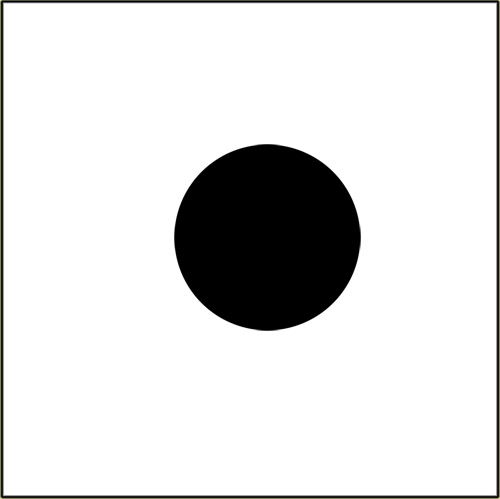You can see like an artist!
Let me show you how.
Look at the figure: a black disk in a white square;
you see instantly see that the disk lies off-center.
There are many things that we see, feel or hear without having to measure it:
-my right hand is larger than the left
-this flagpole isn't straight
-that piano is out of tune
-this drink is sweeter than the one we had before, etc.
We see things in relation to their surrounding:
Put your hand on a book. Now, if the same book was very small with very petite lettering, your hand would appear large. If the same book was to be large with extreme lettering, your hand would appear small.
No object is perceived -seen- as unique or isolated.
Back to the black disk on a white square:
The disk is not simply misplaced with regard to the center of the square. There is something restless about it. It looks as though it had been at the center and wishes to return -or- as though it wants to move away even further. and the disk's relation to the edges of the square is a similar play of attraction and repulsion.
Why don't you make a square out of white paper of about 4" or 10 cm. and place a coin on it. (or any round object as long as it is flat, not 3 dimensional). Try it
The figure with the disk and square is empty and not empty at the same time.If your disk is placed at various locations within the square, it looks solidly at rest at some points, at others it exhibits a pull in a definite direction and in other locations its situation seems unclear and wavering.
For any spatial relation between objects there is a 'correct' distance, established by your eye intuitively.
Artists are sensitive to these requirements when they arrange the pictorial objects in a painting or the elements of a piece of sculpture.
Now then, take your coin and a picture magazine. Looking at random pictures place your coin of the visual center of that image: the spot you think is the most important.
You will see you can do this easily and you 'see' or understand the images in quite a different way.
Next time you make your drawing or photograph, keep this in mind and play with it: it will greatly improve your visual skills.

